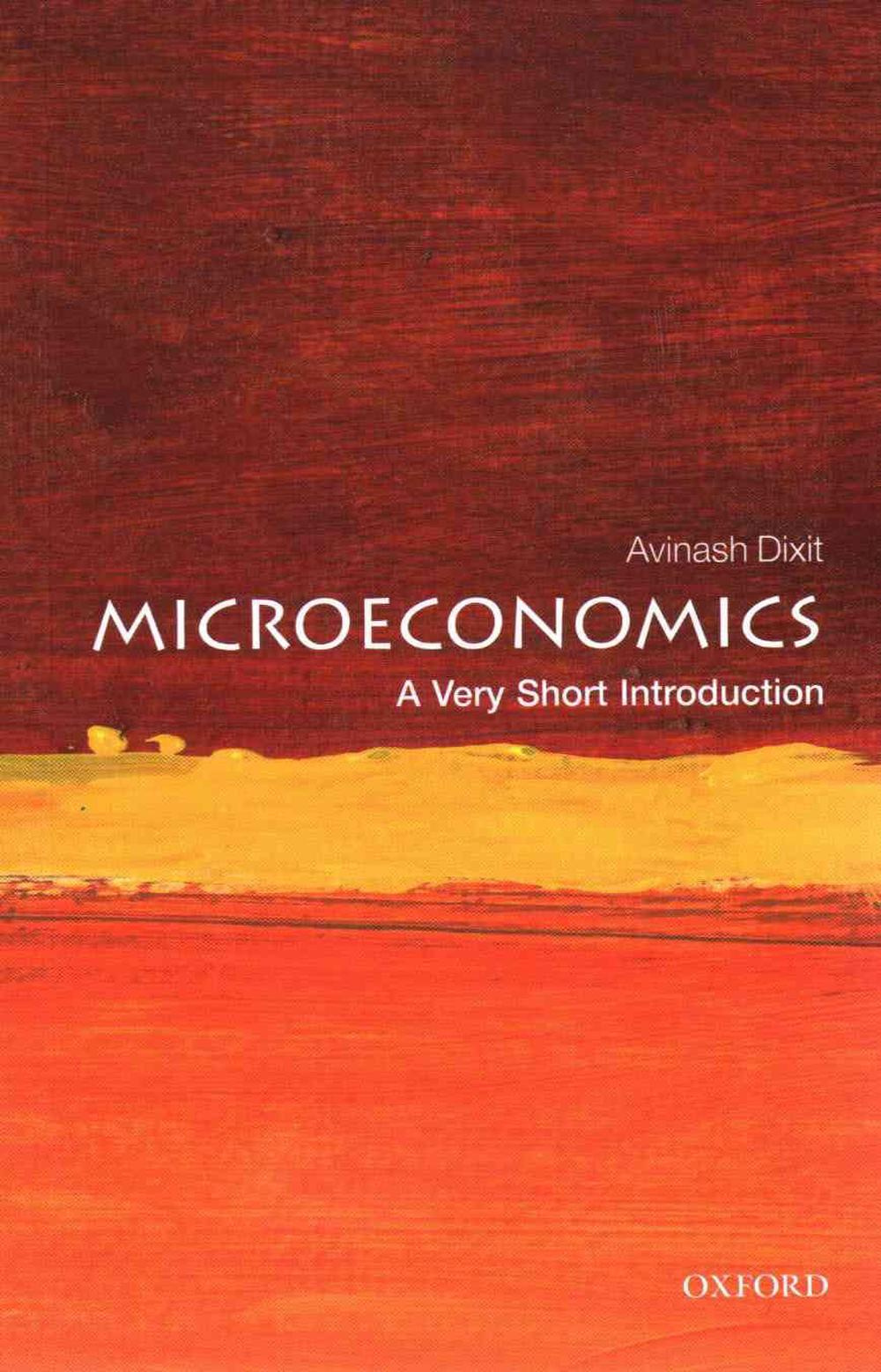
When you click on links to various merchants on this site and make a purchase, this can result in this site earning a commission. Affiliate programs and affiliations include, but are not limited to, the eBay Partner Network.
Microeconomics: A Very Short Introduction by Avinash Dixit (English) Paperback B

- Item No : 388661064384
- Condition : Brand New
- Brand : No brand Info
- Seller : the_nile_uk_store
- Current Bid : US $18.82
-
* Item Description
-
The Nile on eBay

Microeconomics
by Avinash Dixit
The issues of microeconomics - including individuals' financial choices and firms' decisions about hiring and firing - have a large impact on the economic world, arguably as much, if not more than, macroeconomics. In this Very Short Introduction Avinash Dixit clearly explains what microeconomics is by using examples from around the world.
FORMAT
PaperbackLANGUAGE
EnglishCONDITION
Brand New
Publisher Description
Microeconomics - individuals' choices of where to live and work, how much to save, what to buy, and firms' decisions about location, hiring, firing, and investment - involves issues that concern us on a daily basis. But when people think about economics, they tend to place importance on the bigger picture - macroeconomics - including issues such as unemployment, inflation, and the competitiveness of nations. In this Very Short Introduction,Avinash Dixit argues that the microeconomy has a large impact on the economic world, arguably as much as the issues of macroeconomics. Dixit steers a clear path through the huge number ofissues related to microeconomics, explaining what happens when things go well, as well as showing how they fail, why that happens, and what can be done about it. Using real-life examples from around the world, using the minimum of mathematics and including simple graphs, he provides insights into economics from psychology and sociology to explain economic behaviour and rational choice. An ideal introduction for anyone interested in business and economics. ABOUT THESERIES: The Very Short Introductions series from Oxford University Press contains hundreds of titles in almost every subject area. These pocket-sized books are the perfect way to get ahead in a new subjectquickly. Our expert authors combine facts, analysis, perspective, new ideas, and enthusiasm to make interesting and challenging topics highly readable.
Table of Contents
1: What and why of microeconomics2: Consumers3: Producers4: Markets and incentives5: Institutions and organizations6: PolicyFurther reading
Review
One of The Financial Times Best Books of 2014
Dixit demonstrates in this accessible book that economists do at least know a great deal more than nothing about microeconomics * Lorien Kite, Book of the Year 2014, Financial Times *
[A]ccessible and straight-talking * Rutland Mercury *Promotional
An ideal introduction for anyone interested in business and economics.
Long Description
Microeconomics - individuals' choices of where to live and work, how much to save, what to buy, and firms' decisions about location, hiring, firing, and investment - involves issues that concern us on a daily basis. But when people think about economics, they tend to place importance on the bigger picture - macroeconomics - including issues such as unemployment, inflation, and the competitiveness of nations. In this Very Short Introduction,Avinash Dixit argues that the microeconomy has a large impact on the economic world, arguably as much as the issues of macroeconomics. Dixit steers a clear path through the huge number ofissues related to microeconomics, explaining what happens when things go well, as well as showing how they fail, why that happens, and what can be done about it. Using real-life examples from around the world, using the minimum of mathematics and including simple graphs, he provides insights into economics from psychology and sociology to explain economic behaviour and rational choice. An ideal introduction for anyone interested in business and economics. ABOUT THESERIES: The Very Short Introductions series from Oxford University Press contains hundreds of titles in almost every subject area. These pocket-sized books are the perfect way to get ahead in a new subjectquickly. Our expert authors combine facts, analysis, perspective, new ideas, and enthusiasm to make interesting and challenging topics highly readable.
Review Quote
[A]ccessible and straight-talking
Feature
Clearly explains what microeconomics is and how it works
Illustrates the concepts of microeconomics through examples in politics, government, and everyday life
Addresses the failures of the microeconomy and what can be done to address them
Part of the bestselling Very Short Introductions series - over six million copies sold worldwideDetails
ISBN0199689377Author Avinash DixitYear 2014ISBN-10 0199689377ISBN-13 9780199689378Format PaperbackSubtitle A Very Short IntroductionPlace of Publication OxfordCountry of Publication United KingdomDEWEY 338.5Media BookLanguage EnglishAffiliation University of WarwickSeries Very Short IntroductionsShort Title MICROECONOMICSUK Release Date 2014-04-24NZ Release Date 2014-04-24Illustrations 17 black and white illustrationsPages 160Publisher Oxford University PressPublication Date 2014-04-24Imprint Oxford University PressAudience UndergraduateAU Release Date 2014-05-07


-
- The Lost Super Foods
- $ 37.00
- The Self-Sufficient Backyard
- $ 37.00
- A Navy Seals BUG IN GUIDE
- $ 39.00
- Childrens Books Phonics Lot 60
- $ 35.99
















